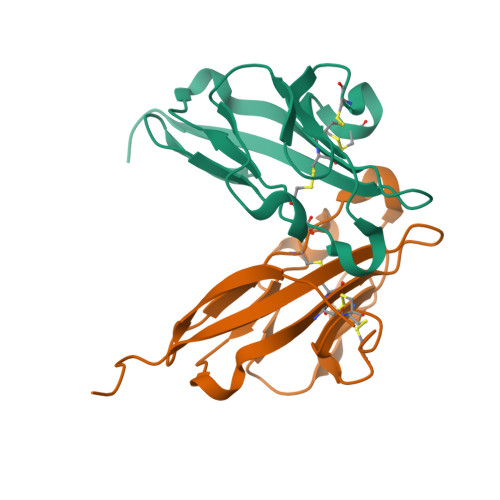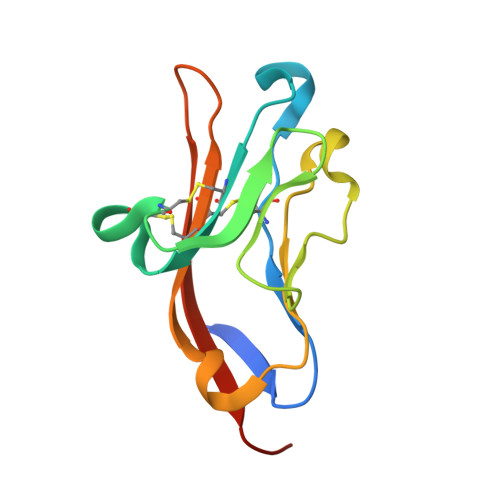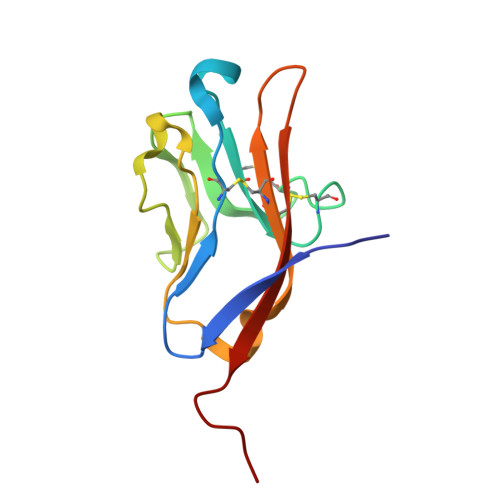Structures of T Cell Immunoglobulin Mucin Receptors 1 and 2 Reveal Mechanisms for Regulation of Immune Responses by the TIM Receptor Family.
Santiago, C., Ballesteros, A., Tami, C., Martinez-Munoz, L., Kaplan, G.G., Casasnovas, J.M.(2007) Immunity 26: 299-310
- PubMed: 17363299
- DOI: https://doi.org/10.1016/j.immuni.2007.01.014
- Primary Citation of Related Structures:
2OR7, 2OR8 - PubMed Abstract:
The T cell immunoglobulin mucin (TIM) receptors are involved in the regulation of immune responses, autoimmunity, and allergy. Structures of the N-terminal ligand binding domain of the murine mTIM-1 and mTIM-2 receptors revealed an immunoglobulin (Ig) fold, with four Cys residues bridging a distinctive CC' loop to the GFC beta-sheet. The structures showed two ligand-recognition modes in the TIM family. The mTIM-1 structure identified a homophilic TIM-TIM adhesion interaction, whereas the mTIM-2 domain formed a dimer that prevented homophilic binding. Biochemical, mutational, and cell adhesion analyses confirmed the divergent ligand-binding modes revealed by the structures. Structural features characteristic of mTIM-1 appear conserved in human TIM-1, which also mediated homophilic interactions. The extracellular mucin domain enhanced binding through the Ig domain, modulating TIM receptor functions. These results explain the divergent immune functions described for the murine receptors and the role of TIM-1 as a cell adhesion receptor in renal regeneration and cancer.
Organizational Affiliation:
Centro Nacional de Biotecnologia, CSIC, Campus Universidad Autónoma, 28049 Madrid, Spain.




















